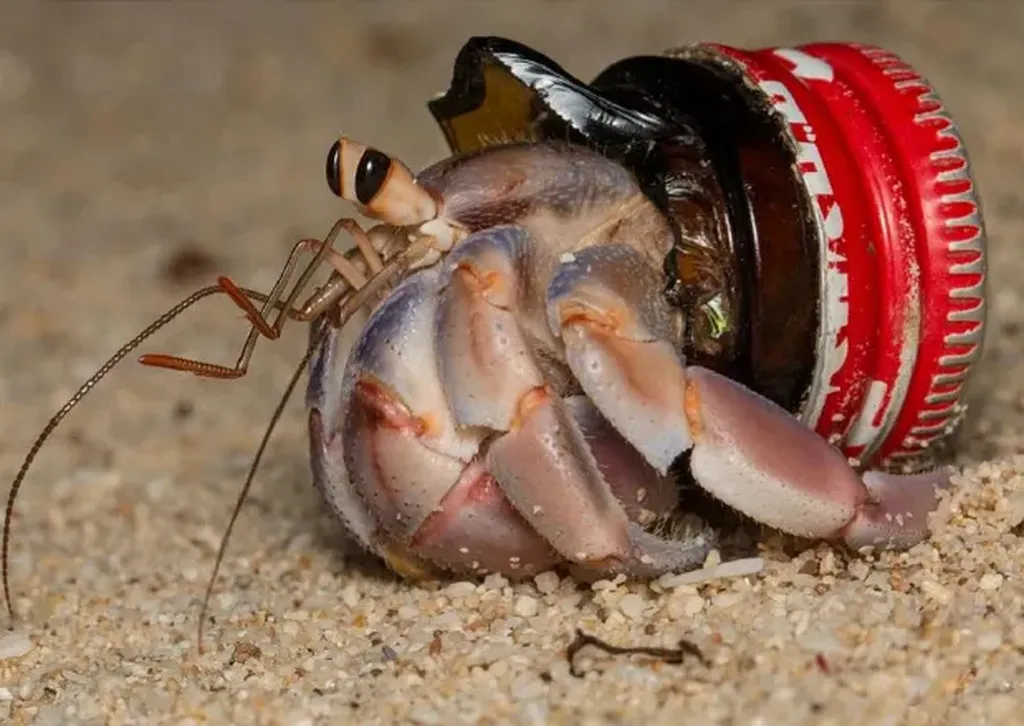In a groundbreaking stride towards sustainable construction, researchers have discovered a novel way to transform biowaste into a powerful nano-reinforcement for cement composites. The study, led by Udakandage Dananjaya from the Department of Biosystems Technology at the University of Sri Jayewardenepura, explores the potential of chitin nanofibers (ChNFs) extracted from discarded crab shells to enhance the strength and longevity of expanded polystyrene (EPS) cement composites.
The construction industry, a significant contributor to global waste and carbon emissions, is increasingly seeking eco-friendly materials and efficient resource utilization. This research, published in the journal ‘Academia Nano’ (which translates to ‘Academia of Nano’ in English), offers a promising solution by repurposing biowaste into a valuable construction material.
ChNFs, derived from crab shell waste, were integrated into EPS cement composites at varying concentrations. The results were striking: higher ChNF concentrations led to substantial improvements in strength. Specifically, the compressive strength increased by 11%, 22%, and 35% for ChNF concentrations of 0.025%, 0.05%, and 0.075% by weight, respectively, compared to the control sample. The highest strength was observed at 0.075% ChNFs, reaching an impressive 4.9 MPa.
Moreover, the study revealed significant reductions in water absorption, a critical factor in the durability of construction materials. The initial water absorption decreased by 61% to 87%, and secondary absorption dropped by 38% to 75%. The most substantial reductions were noted in the sample with 0.075% ChNFs, showcasing the material’s potential to enhance longevity and reduce maintenance costs.
“These findings demonstrate that ChNFs not only strengthen cement composites but also act as a longevity agent,” said Udakandage Dananjaya. “By utilizing biowaste, we are providing a sustainable solution that could revolutionize the construction industry.”
The research employed advanced characterization techniques such as X-Ray Diffraction (XRD), Fourier Transform Infrared (FTIR) spectroscopy, and Atomic Force Microscopy (AFM) to confirm the formation and effectiveness of ChNFs. These methods provided a comprehensive understanding of the material’s properties and its interaction with the cement matrix.
The implications of this research are far-reaching. As the construction industry grapples with the need for sustainable and durable materials, the use of ChNFs from crab shell waste offers a viable and eco-friendly alternative. The enhanced strength and reduced water absorption of the composites can lead to more resilient structures, lower maintenance costs, and a reduced environmental footprint.
“This study opens up new avenues for the construction industry to embrace sustainable practices,” added Dananjaya. “By integrating biowaste into our materials, we are not only reducing waste but also creating stronger and more durable construction materials.”
As the world continues to seek innovative solutions to environmental challenges, this research highlights the potential of biowaste as a valuable resource. The findings could pave the way for future developments in sustainable construction, offering a blueprint for how waste materials can be transformed into high-performance building materials.
In the quest for a greener future, the integration of ChNFs into cement composites stands as a testament to the power of innovation and sustainability. As the construction industry continues to evolve, the insights from this research could shape the next generation of eco-friendly and durable building materials, ultimately contributing to a more sustainable and resilient built environment.

